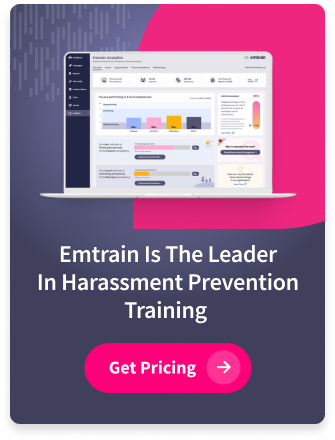The Compliance Blind Spot That Creates Organizational Liability
For general counsel and compliance officers, the challenge isn’t just creating comprehensive policies—it’s ensuring those policies are acknowledged, understood, and consistently applied across the organization. When regulatory agencies investigate violations, one of the first questions asked is: “Did employees receive and acknowledge your policies?”
Inadequate policy management systems create significant risk exposure. According to the DOJ’s Evaluation of Corporate Compliance Programs guidance, organizations must demonstrate not just that policies exist, but that employees have regular access, receive updates promptly, and provide documented acknowledgment. Manual tracking methods and disconnected systems leave dangerous gaps that investigators exploit.
What Effective Policy Management Systems Must Deliver
Modern policy management extends far beyond document repositories. Legal and compliance leaders need integrated systems that address three critical requirements:
Centralized Policy Governance With Version Control
Effective platforms maintain comprehensive audit trails showing who created, reviewed, approved, and distributed each policy version. When regulations change or litigation arises, you need instant access to historical policy versions and distribution records. Scattered documents across shared drives create liability, not protection.
Automated Distribution and Attestation Tracking
Manual email campaigns and spreadsheet tracking are compliance vulnerabilities waiting to be discovered. Sophisticated policy management systems automatically distribute relevant policies to employees based on role, location, and regulatory requirements, then track acknowledgments with date stamps and digital signatures that withstand legal scrutiny.
Integration With Training and Compliance Programs
Policies don’t exist in isolation. The most robust systems connect policy acknowledgments with Emtrain’s compliance training programs, creating a unified compliance record. When employees complete anti-corruption training, they should simultaneously attest to your FCPA policy. This integration reduces administrative burden while strengthening your compliance program’s credibility.
Addressing the Critical Gap: Policy Attestations That Satisfy DOJ Requirements
The Department of Justice’s updated guidance on corporate compliance programs emphasizes that effective programs require more than policy distribution—they demand proof that employees understand and can apply those policies to real situations. The Criminal Division’s compliance program evaluation framework makes clear that policy effectiveness, not just existence, matters in prosecution decisions.
Documentation That Withstands Regulatory Scrutiny
Your attestation records must provide unambiguous evidence of policy delivery, employee acknowledgment, and timestamp accuracy. Systems that capture IP addresses, track multiple acknowledgment attempts, and maintain immutable records provide litigation-ready documentation that manual processes cannot match.
Risk-Based Policy Assignment
Not every employee needs every policy. Compliance officers should leverage systems that enable risk-based policy assignment, ensuring high-risk roles receive specialized policies while avoiding overwhelming low-risk employees with irrelevant documentation. This targeted approach demonstrates thoughtful program design to regulators.
Remediation Protocols for Non-Acknowledgment
Your policy management system should automatically flag employees who haven’t acknowledged critical policies and trigger escalation protocols. Whether it’s manager notification, system access restriction, or compliance team intervention, automated remediation demonstrates the seriousness of your compliance culture.
Minimizing Administrative Burden While Maximizing Protection
Compliance program managers consistently cite administrative complexity as a barrier to effective policy governance. The challenge isn’t just creating comprehensive policies—it’s ensuring they reach the right people at the right time without creating unsustainable workloads for compliance teams. Modern systems address this challenge through several capabilities that automate the most time-consuming aspects of policy management while strengthening oversight and accountability.
Conditional Policy Delivery Based on Employee Attributes
Advanced platforms automatically route policies based on department, geography, employment status, and access level, eliminating the manual segmentation that traditionally consumes hours of compliance team bandwidth. When you update your insider trading policy, only employees with material non-public information access receive it—no manual list maintenance required.
This precision extends beyond simple role-based assignments: systems can layer multiple criteria simultaneously, ensuring that a finance manager in your European subsidiary receives the exact combination of policies relevant to their unique position. As organizational structures evolve—through promotions, transfers, acquisitions, or departmental restructuring—dynamic policy assignment adapts in real time, maintaining protection without requiring constant administrative intervention. The result is a distribution model that scales with organizational complexity rather than multiplying administrative overhead.
Analytics That Identify Compliance Gaps
Dashboards showing acknowledgement rates by department, policy type, and employee cohort enable proactive intervention before gaps become violations. Rather than discovering non-compliance during an audit or investigation, compliance teams can identify patterns as they emerge: Which departments consistently lag in policy acknowledgment? Are certain policy types generating confusion or resistance? Do specific employee segments require additional training or communication?
These analytics also provide valuable data for board reporting and regulatory inquiries, transforming compliance from a reactive function to a strategic capability with measurable outcomes. Explore how workplace analytics tools can identify policy compliance patterns across your organization, revealing insights that inform both immediate corrective actions and long-term program improvements. The most sophisticated platforms go beyond simple completion tracking, offering behavioral analytics that highlight risk indicators such as unusually rapid acknowledgments or repeated access without completion.
Seamless Updates Without Restarting Distribution Cycles
When regulations change, your system should enable instant policy updates with automatic re-distribution to affected employees and clear documentation distinguishing who acknowledged which version. This agility protects organizations in rapidly evolving regulatory environments where delayed implementation can create exposure windows. Traditional approaches require pausing active distribution cycles, versioning documents, creating new distribution lists, and manually tracking who received which iteration—a process that can take days or weeks.
Modern platforms compress this timeline to minutes: update the policy once, and the system handles version control, targeted redistribution to relevant employees, notification workflows, and acknowledgment tracking automatically. The audit trail remains intact, documenting precisely when each version was published, who received it, and when they acknowledged—creating the defensible record regulators expect. This capability proves particularly valuable when regulatory guidance shifts unexpectedly or when internal investigations reveal policy gaps requiring immediate remediation.
Building a Defensible Policy Management Framework
Effective policy management isn’t about technology alone—it’s about creating organizational processes that demonstrate commitment to compliance:
Establish clear governance protocols for policy creation, review cycles, and approval workflows. Document who has authority to create policies, required review intervals, and escalation procedures for urgent updates.
Implement regular audits of your policy inventory to identify outdated documents, inconsistent requirements, and coverage gaps. These reviews provide evidence of program maintenance that regulators value.
Create clear connections between policies, training content, and employee resources. When your anti-harassment policy references specific reporting mechanisms, ensure those mechanisms are readily accessible and consistently communicated. Review the EEOC’s guidance on preventing harassment to ensure your policies align with federal expectations.
The Strategic Advantage: From Compliance Burden to Risk Intelligence
Forward-thinking legal and compliance leaders recognize that sophisticated policy management systems provide more than audit protection—they generate risk intelligence. By analyzing which policies generate questions, which departments have low acknowledgment rates, and which updates create confusion, compliance teams identify culture risks before they become violations.
Organizations that view policy management as strategic infrastructure rather than administrative overhead position themselves to detect and prevent compliance failures while simultaneously reducing the operational burden on compliance teams.
Strengthen Your Policy Management Framework
Download our Policy Management Checklist for a framework that satisfies regulatory requirements while reducing administrative complexity.








